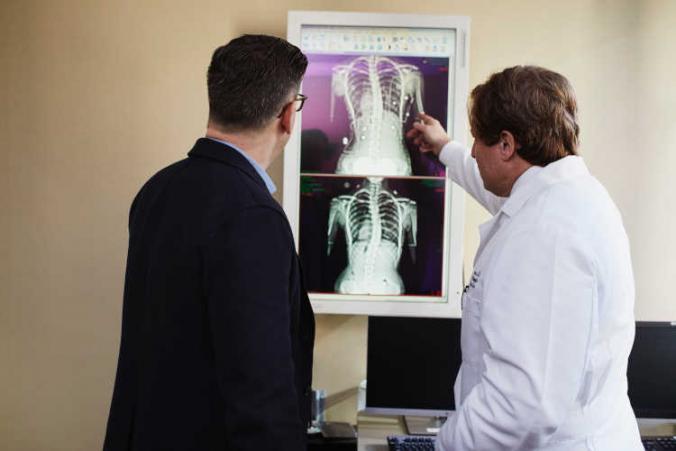Every workers compensation claim in Washington State must have an attending provider, which is sometimes referred to as the attending physician or attending doctor. But how do you find an L&I doctor? It’s not easy. Whether you have a state-funded L&I claim or a workers comp claim with a self-insured employer, you must have an attending physician on the record. This attending doctor sees you regularly throughout your L&I claim and is primarily responsible for medical opinions supporting your entitlement to benefits. These benefits include both medical treatment and coverage, as well as monetary benefits such as time loss compensation. Moreover, the attending physician is usually the person who makes referrals to other treating doctors and specialists.
Find an L&I doctor on the L&I Medical Provider Network (MPN)
The Department of Labor and Industries (L&I) maintains a list of attending physicians. This list is called the Medical Provider Network or MPN in short. Looking at the list, you’ll see that there are LOTS of doctors on the Medical Provider Network. Some are local and reside here in Washington State and serve patients in your area. Others are out-of-state doctors that serve work injury victims that got hurt in Washington State and later moved out of state.
If you got injured at work in Washington State, you can choose your own primary doctor for your L&I claim. Here, the only rule is that your doctor must be a member of the Medical Provider Network. Also, when your attending physician refers you to other doctors and specialists, with very rare exceptions, all those other treating providers must also be part of the medical network. These include physicians, surgeons, chiropractors, naturopathic physicians, podiatric physicians, ARNP providers, PA-C physicians, dentists, optometrists, and so on.
Challenges finding a medical provider for your L&I claim
The MPN was enacted by the legislature in 2011. It was implemented and later launched by L&I in 2013. Since then, I have seen a significant increase in difficulties for work injury claimants to find an attending physician. Some challenges that we regularly see at our office include:
(a) Trouble finding willing MPN attending providers in a location reasonably close to the injured worker;
(b) Inability to find a new attending provider if the prior attending provider is no longer available for whatever reason; and
(c) Difficulty finding an attending provider willing to take over if the claim is more than a few months old.
The reason for these challenges (in my opinion) is because L&I claims are time consuming, they are riddled with challenges, and they are not lucrative. Being an attending provider is very time consuming. As a doctor, you have to examine the injured worker roughly every 30 days. On top, you must also complete regular administrative paperwork like the Activity Prescription Form or APF. You must also respond to inquiries from the claim manager and vocational counselor. If a work injury claimant has an attorney, the doctors are likely to get inquiries from their workers compensation law firm as well. If that’s not enough, doctors have to complete the relevant paperwork outside clinical practice hours.
Being a medical doctor on a claim is time consuming
Being an AP is tough. Members of the MPN are required to follow strict treatment guidelines that L&I says are evidence-based best practices. These requirements limit a provider’s ability to exercise their own knowledge and expertise in formulating opinions and making recommendations. However, claims are contentious. Medical providers often find themselves unable to move a claim forward due to legal disputes. Sometimes, attending doctors must provide a testimony in a deposition to help resolve the dispute. All these activities take time away from other aspects of their medical practice.
Finally, while I’m not an expert on rates, I frequently hear medical doctors complain that L&I pay rates are very low. So, combining the extra time and frustration providers put into these claims, they also get paid at a bottom dollar rate. Consequently, I’ve seen some good doctors still willing to help and take on L&I claim cases, but they limit the number of L&I patients they treat at any given time.
How to find an L&I doctor? L&I is not helping
Since the MPN was launched in 2013, I’ve seen L&I do nothing to help incentivize medical providers to treat injured workers. Furthermore, L&I makes injured workers jump through hoops before willing to assist in finding a willing attending provider. I represent many injured workers currently looking for a new attending provider because their previous doctor recently retired. With claims that are years old, it’s nearly impossible to find willing attending physicians in the Medical Provider Network.
Finding a doctor for an L&I claim can be tough
The first step in obtaining a new attending provider is using the L&I Find a Doc search to identify potential providers. At first, the prospects look promising. For example, searching all providers within 15 miles of our Port Orchard office yields 1,819 options. Removing specialties such as dentistry, we still see 617 providers in general practice, orthopedics, internal medicine, occupational medicine and the like. With 617 options to choose from, you’d think it would be easy to find a willing provider. I can tell you from first-hand experience – it is extremely difficult, daunting, and disheartening.
Injured workers must call the providers to determine if the doctor is willing to see them. In most cases, the answer is a simple No. However, before saying no, some providers ask for medical records or access to review the claim file on Claims and Account Center (CAC). In those cases, it can take weeks to get an answer. Usually, this process continues for months.
In our office, we ask our clients to maintain a journal to document the providers they call, when they call, and the provider’s response. In several cases, we have clients who called hundreds of providers without any success. During that time, the Department is often threatening to terminate benefits.
Conclusions and final notes
L&I requires that injured workers have an attending physician. Yet, L&I fails to adequately incentivize or encourage medical providers to take on workers’ compensation claims. As an L&I attorney representing work injury claimants in Washington State, it makes the life of my clients very difficult. It’s hard for injured workers to find doctors that are willing to see them. And, throughout this entire process and struggle, L&I almost always threatens to terminate benefits.
Workers compensation attorneys like me report these issues with the MPN all the time. However, when an injured worker asks L&I for help to find a doctor for a claim, L&I forces the work injury claimant to prove they aren’t able to find a doctor on their own. This is just another example of how L&I is not making injured workers a priority.


